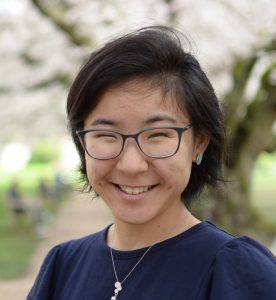 Congratulations to Momona Yamagami for passing her general exam!
Congratulations to Momona Yamagami for passing her general exam!
Momona’s proposed work titled Enhancing Device Interaction for People with Motor Impairments Using Control Theory was approved by her Ph.D. committee. Way to go Momona!
 Congratulations to Momona Yamagami for passing her general exam!
Congratulations to Momona Yamagami for passing her general exam!
Momona’s proposed work titled Enhancing Device Interaction for People with Motor Impairments Using Control Theory was approved by her Ph.D. committee. Way to go Momona!
Steele Lab members – Kat, Christina, Nick, and Momona – were invited to present their research about wearable sensors for stroke recovery and device control to the Seattle Young Adult Stroke Survivors (YASS). YASS is a support group for individuals who have experienced a stroke and creates a community to learn, listen, share, and more. Steele lab was one of the first research groups to come and share our work with them.
Our presentation began with background information regarding neurophysiological changes after stroke to provide insight into upper extremity functional impairments – including weakness, loss of dexterity, and abnormal tone. Wearable sensors, such as electromyography (EMG), can provide information regarding muscle function. Many of the listeners were surprised to hear that their own smartphones or watches can act as wearable sensors!
A focus of our research is detecting muscle activity early after stroke using EMG. One member recalled thinking their muscle was firing during their acute recovery but could not see any physical movement. EMG allows us to capture that type of activity and any functional changes throughout recovery, empowering patients and clinicians to track their recovery and adjust their therapy regimen. The crowd was interested in using EMG to evaluate their own muscles, identify which were firing, and guide their rehabilitation.
EMG not only helps us track recovery, but can be paired with consumer technology. Nick demonstrated how using muscle activity from the affected limb can incorporate rehabilitation into daily computer use. EMG signals can simulate pressing keys on a keyboard or moving a mouse cursor, making it easier for people with limited mobility to use technology. YASS members expressed enthusiasm about the increasing commercial availability of such devices so they can buy them and give them a try.
It was a great opportunity to connect with stroke survivors and hear their thoughts on wearable sensors. Thank you to YASS for having us come in and share our research!
Five members of our lab – Kat, Michael, Alyssa, Megan, & Nicole – attended ISB 2019 in Calgary, Canada. The International Society of Biomechanics promotes and supports international contacts amongst scientists, the dissemination of knowledge, and the activities of national organizations in the field of biomechanics.
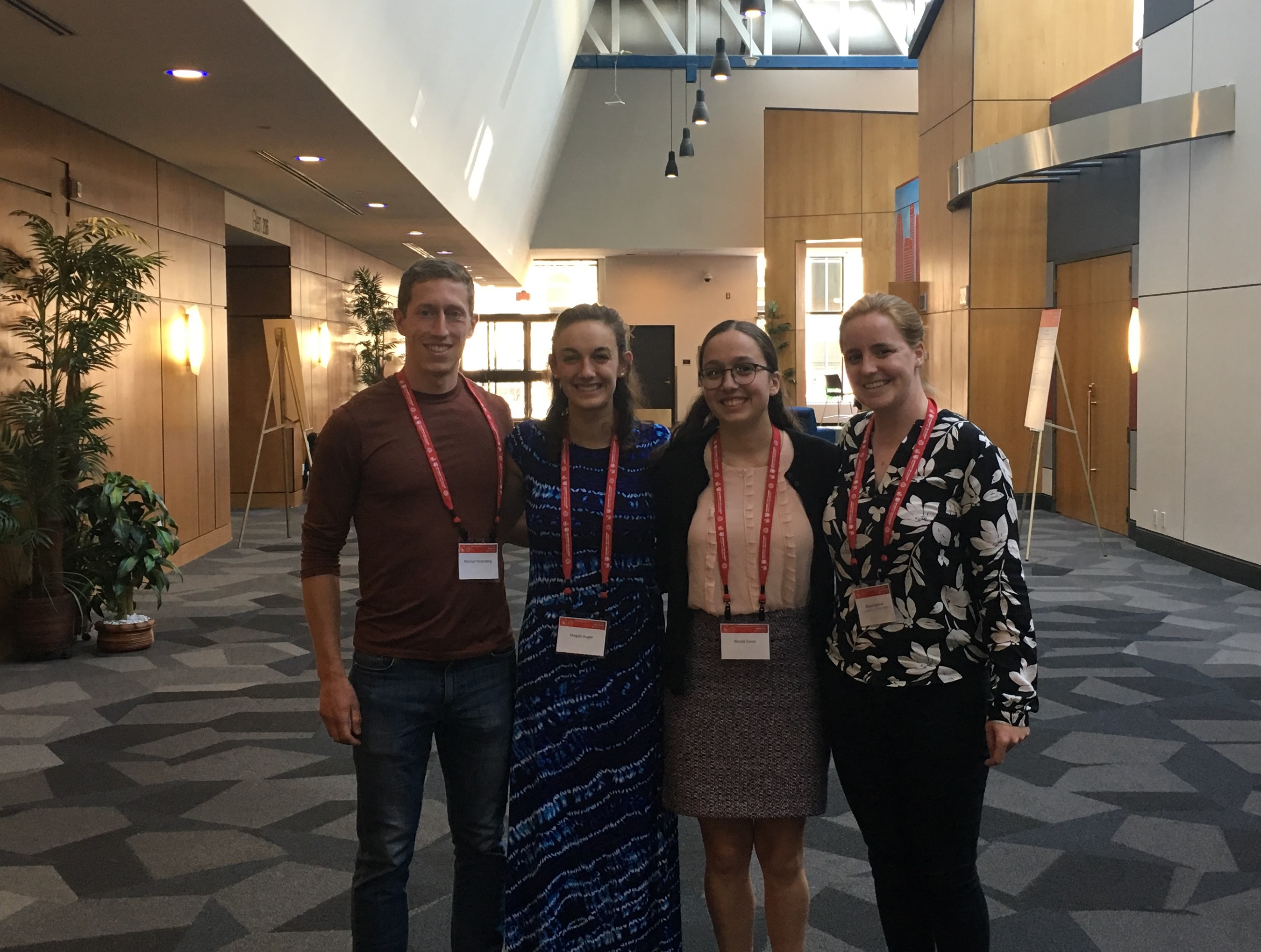
Our work at the conference included:
Kat Steele: ISB presentation on in-clinic EMG monitoring for muscle activity and movement in acute care in the initial days after stroke.
Michael Rosenberg: ISB poster showcasing how individuals’ kinematics and muscle activity change in response to ankle exoskeleton stiffness during acceleration from standing. ISB presentation on open-loop modeling of response to ankle exoskeleton torque during walking.
Alyssa Spomer: ISB poster highlighting how motor control is impacted when typically developing individuals emulate cerebral palsy gait patterns. ISB poster on understanding how individuals can alter motor control expression using visual biofeedback.
Megan Auger: ISB presentation on how muscle coordination strategies in typically developing children and children with cerebral palsy are not accurately captured using standard musculoskeletal modeling optimization algorithms in computer simulation.
Nicole Zaino: ISB presentation on spasticity reduction via rhizotomy in children with cerebral palsy and how there was no significant difference in the change in energy consumption when compared to a control group of children with cerebral palsy who had no rhizotomy.
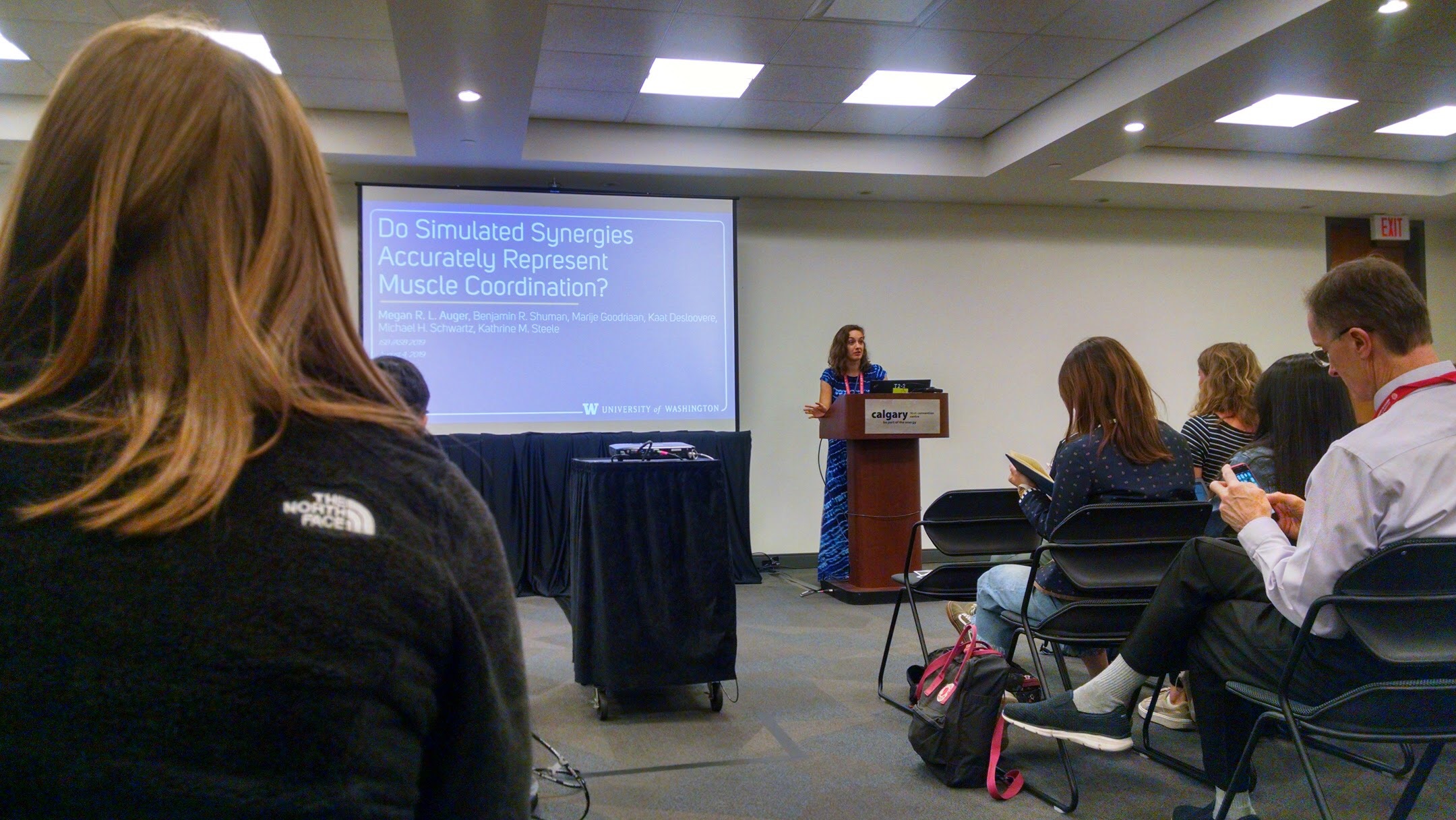
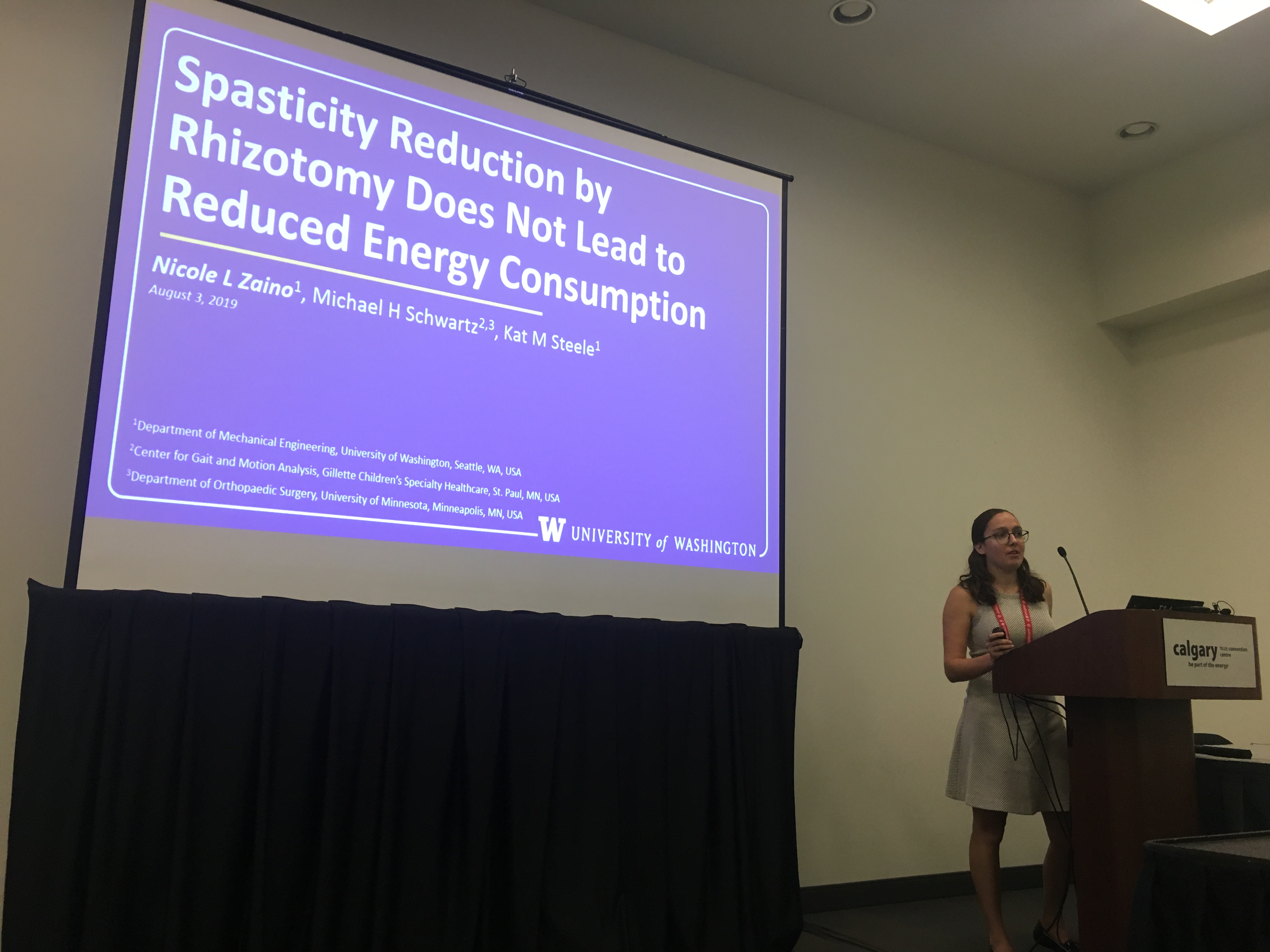
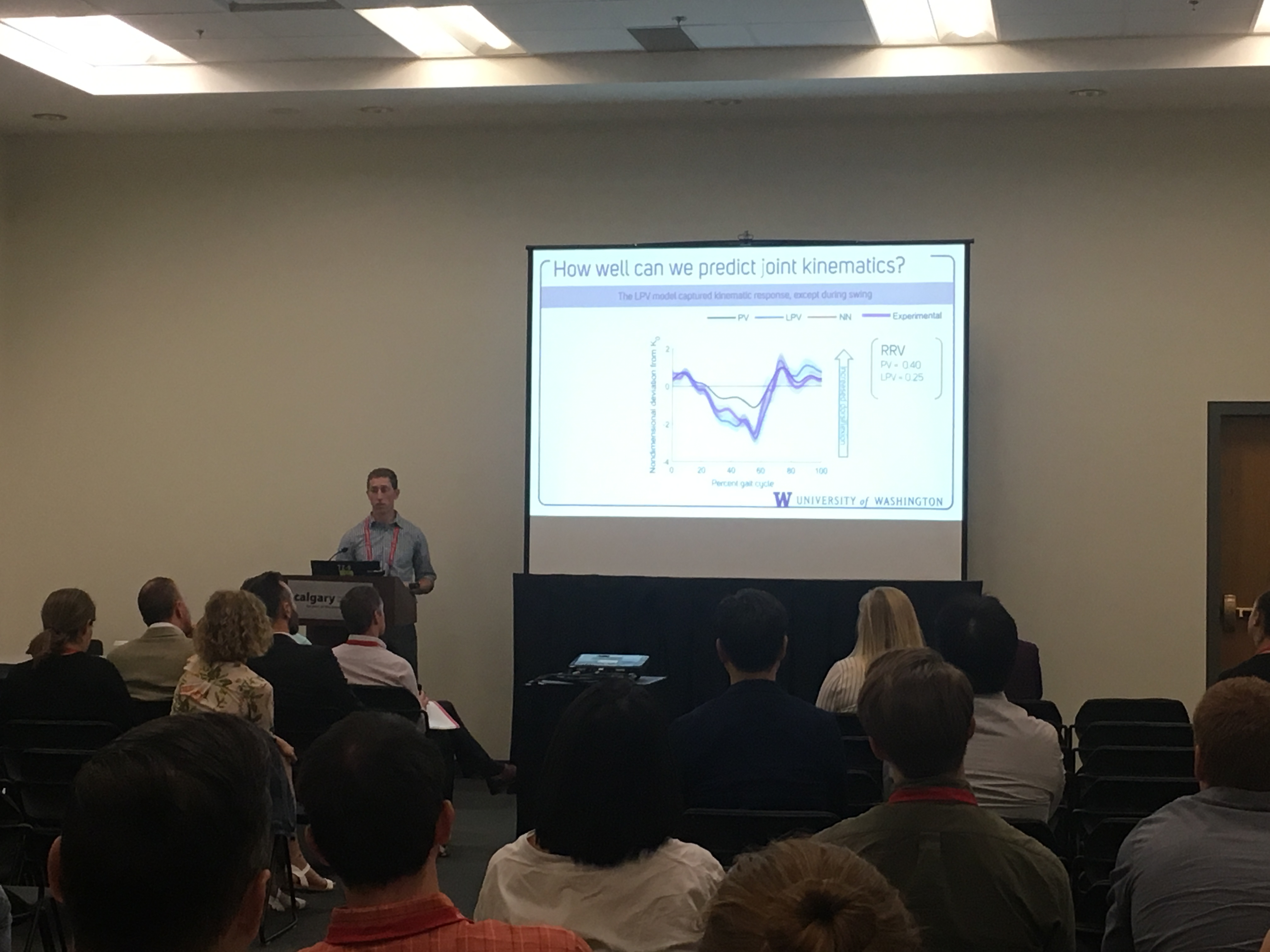
Additionally, two members of our lab – Michael & Megan – attended TGCS 2019 in Canmore, Canada prior to ISB 2019. The Technical Group on Computer Simulation (TGCS) is a scientific and technical meeting for investigators and students in all areas of computer simulation in biomechanics. This group was a highly-focused subset of the ISB community, primarily focusing on forward simulation of unimpaired and pathological gait patterns, but also touching on multi-scale simulation, diving, cycling, and wheelchair use.

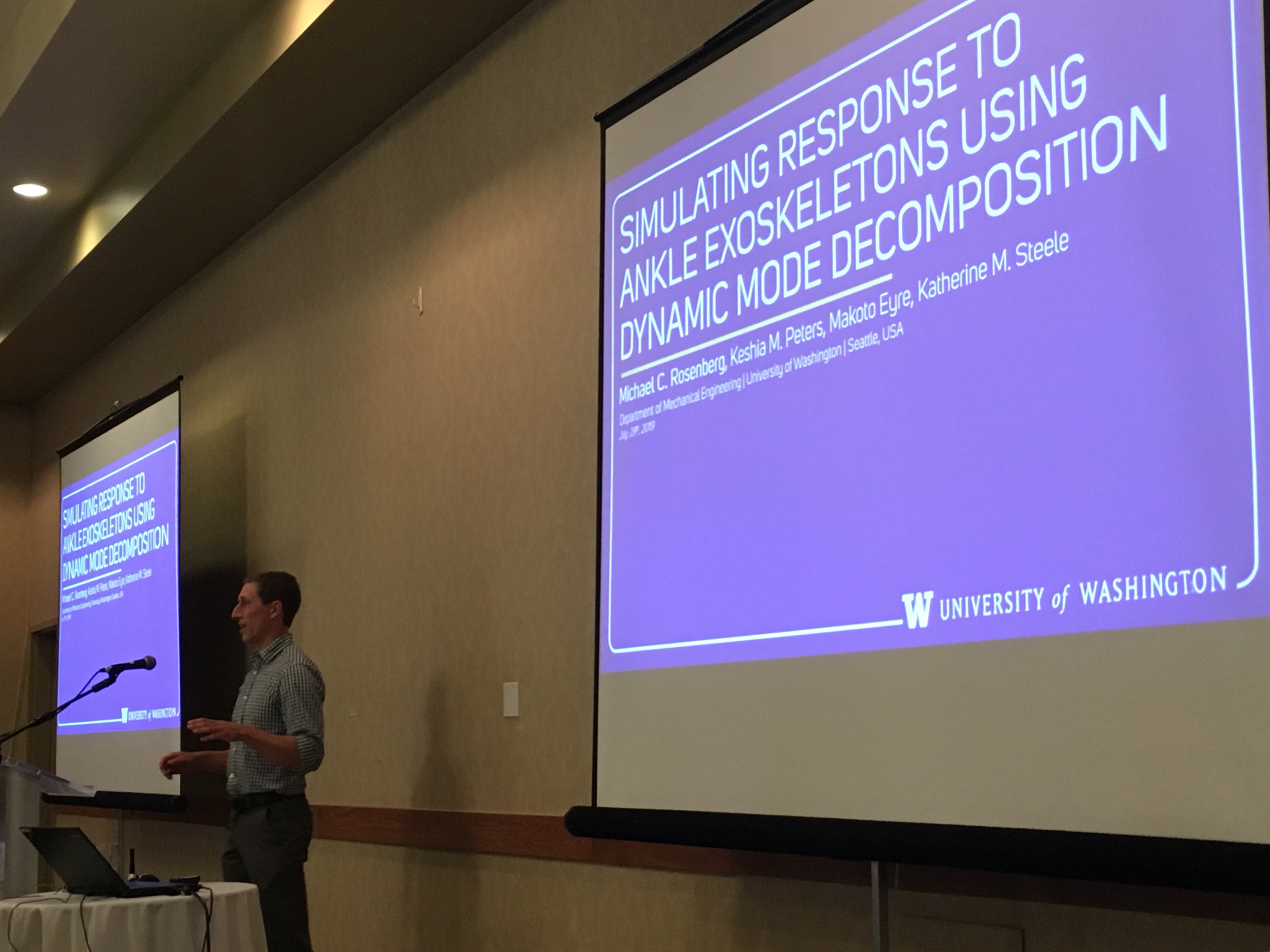
Congratulations to Dr. Benjamin Shuman on earning his Doctorate in Mechanical Engineering! Dr. Shuman’s PhD thesis dissertation was titled Evaluation of Muscle Synergies in Individuals with Cerebral Palsy. Dr. Kat Steele performed the Hooding Ceremony to recognize his achievements. Congratulations, Dr. Benjamin Shuman!
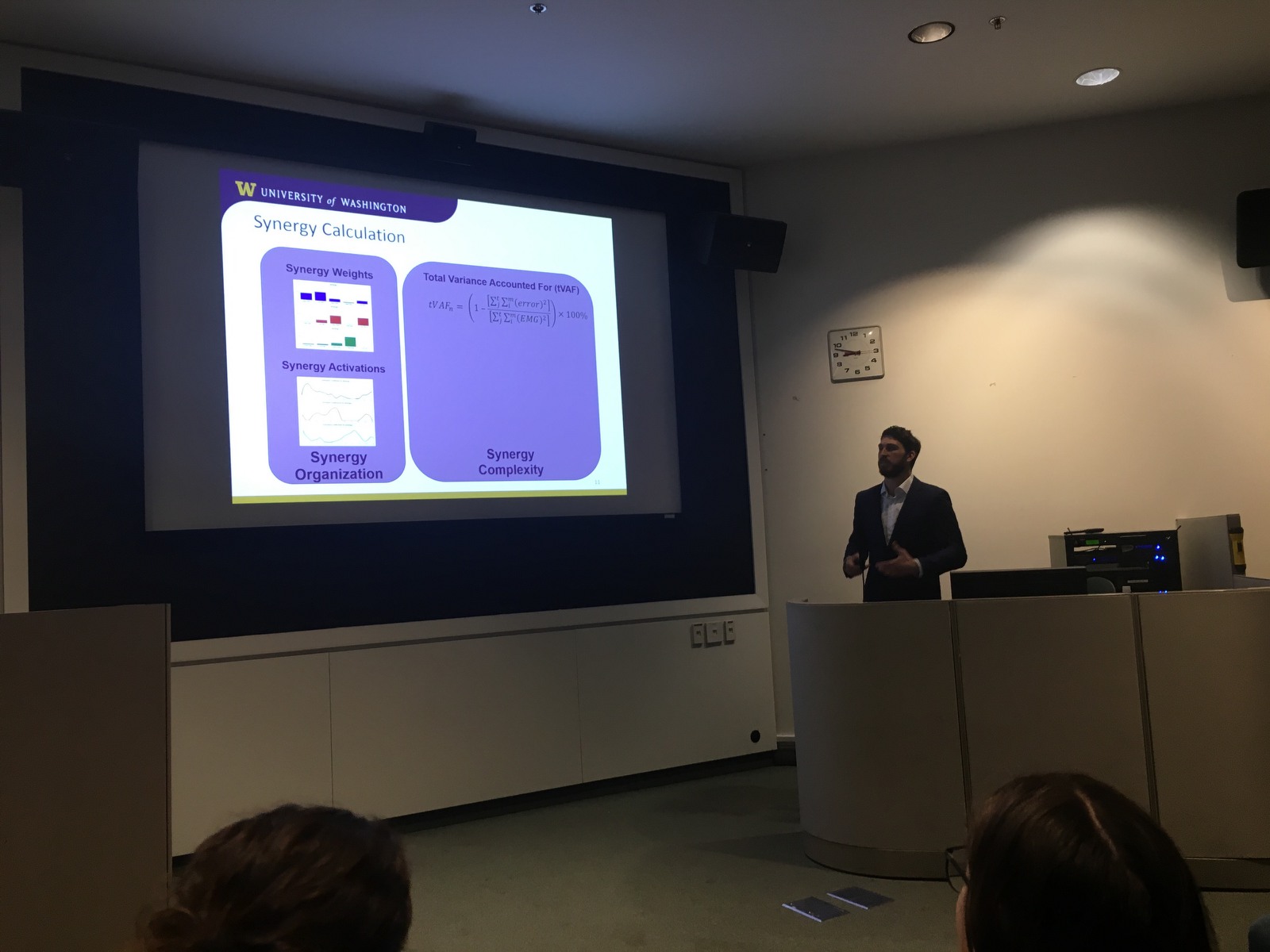
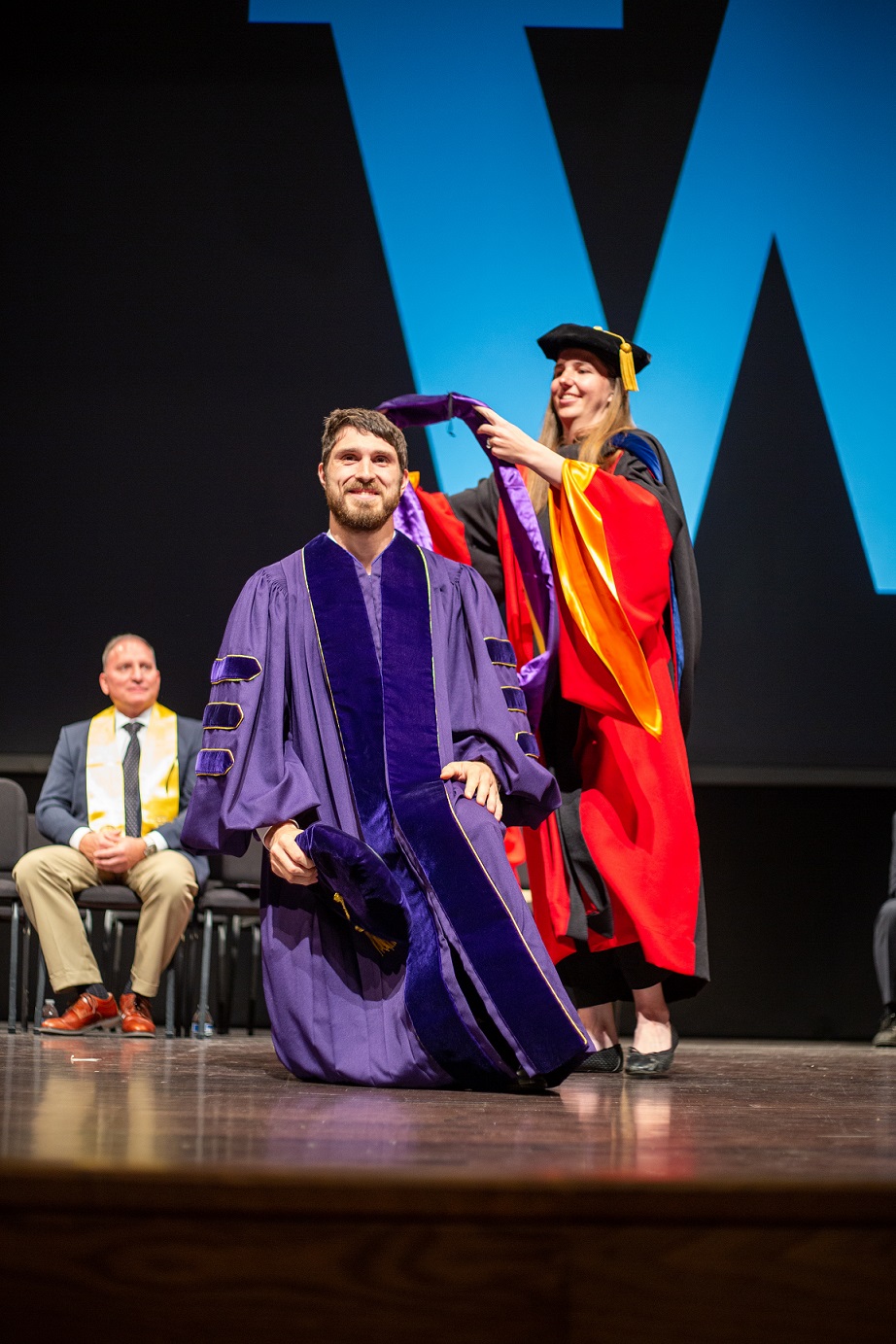
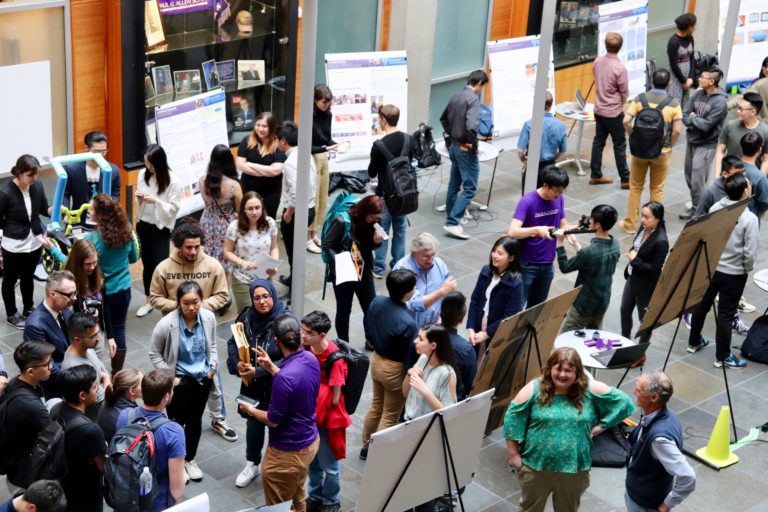
The HuskyADAPT Inclusive Design & Engineering Showcase was last week where students presented the projects that they have been working on for the past year. These ranged from a kayak paddle attachment for individuals with upper limb differences, an accessible and functional stylus for individuals with muscular or cognitive impairments, and a universal wireless switch for adapted toys.
Read more here: https://www.geekwire.com/2019/inclusive-design-accessible-tech-spotlight-univ-washington-student-showcase/